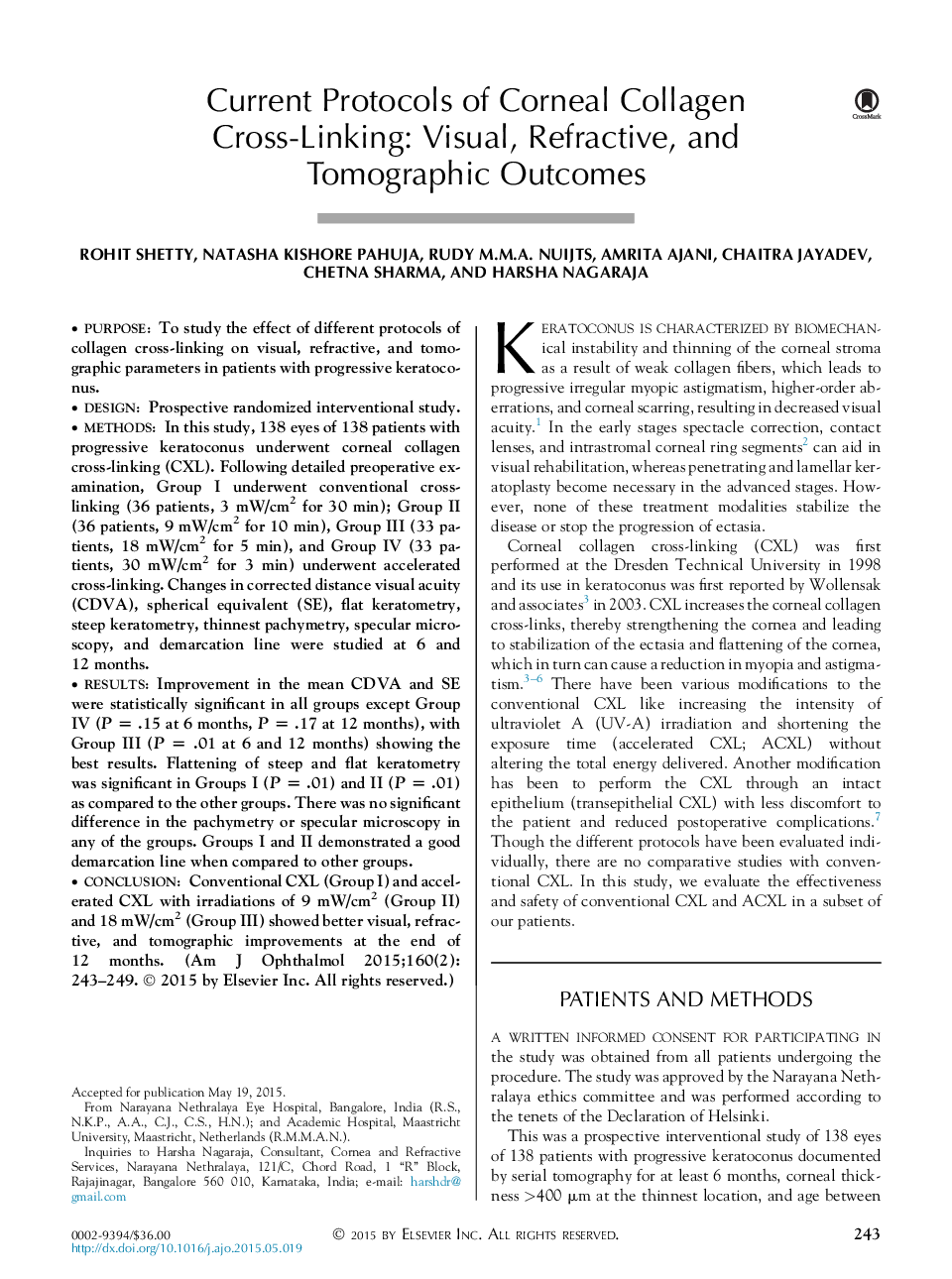| کد مقاله | کد نشریه | سال انتشار | مقاله انگلیسی | نسخه تمام متن |
|---|---|---|---|---|
| 6195255 | 1602121 | 2015 | 7 صفحه PDF | دانلود رایگان |
PurposeTo study the effect of different protocols of collagen cross-linking on visual, refractive, and tomographic parameters in patients with progressive keratoconus.DesignProspective randomized interventional study.MethodsIn this study, 138 eyes of 138 patients with progressive keratoconus underwent corneal collagen cross-linking (CXL). Following detailed preoperative examination, Group I underwent conventional cross-linking (36 patients, 3 mW/cm2 for 30Â min); Group II (36 patients, 9 mW/cm2 for 10Â min), Group III (33 patients, 18 mW/cm2 for 5Â min), and Group IV (33 patients, 30 mW/cm2 for 3Â min) underwent accelerated cross-linking. Changes in corrected distance visual acuity (CDVA), spherical equivalent (SE), flat keratometry, steep keratometry, thinnest pachymetry, specular microscopy, and demarcation line were studied at 6 and 12Â months.ResultsImprovement in the mean CDVA and SE were statistically significant in all groups except Group IV (PÂ = .15 at 6Â months, PÂ = .17 at 12Â months), with Group III (PÂ = .01 at 6 and 12Â months) showing the best results. Flattening of steep and flat keratometry was significant in Groups I (PÂ = .01) and II (PÂ = .01) as compared to the other groups. There was no significant difference in the pachymetry or specular microscopy in any of the groups. Groups I and II demonstrated a good demarcation line when compared to other groups.ConclusionConventional CXL (Group I) and accelerated CXL with irradiations of 9 mW/cm2 (Group II) and 18 mW/cm2 (Group III) showed better visual, refractive, and tomographic improvements at the end of 12Â months.
Journal: American Journal of Ophthalmology - Volume 160, Issue 2, August 2015, Pages 243-249
